![]()
![]()
![]()
Use LEFT and RIGHT arrow keys to navigate between flashcards;
Use UP and DOWN arrow keys to flip the card;
H to show hint;
A reads text to speech;
100 Cards in this Set
- Front
- Back
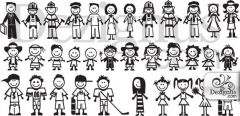
1. Economics
|
1.The study of how people seek to satisfy their needs and wants by making decisions
|
|
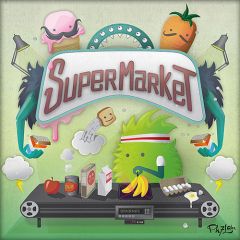
2.Scarcity
|
Limited quantities of resources to meet unlimited wants
|
|

3. Opportunity Costs
|
The most desirable alternative given up as the result of a decision
|
|

4. Trade Offs
|
An alternative we sacrifice when we make a decision
|
|
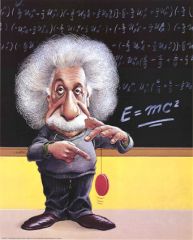
5. Entrepreneur
|
Ambitious leader who combines land, labor, and capital to create and market new goods or services
|
|

6. factors of production
|
Land, labor, and capital; the three groups of resources that are used to make all goods and services
|
|
|
7. Productions Possibility Curve
|
A curve that shows alternative ways to use an economy’s resources
|
|

8. Law of increasing costs
|
As we shift factors of production from making one good or service to another, the cost of producing the second item decreases
|
|
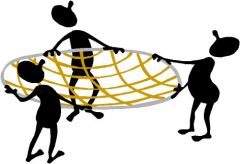
9. satey net
|
Government programs that protect experiencing unfavorable conditions
|
|

10. traditional economy
|
Economic system that relies on habit, custom, or ritual to decide the questions of production and consumption of goods and services
|
|
|
11. Market economy (free enterprise)
|
Economic system in which decisions on production and consumption of goods and services are based on voluntary exchange in markets
|
|

12. centrally planned economy
|
Economic system in which the central government makes all decisions on the production and consumption of goods and services
|
|
|
13.factor market
|
Market in which firms purchase the factors of production from households
|
|
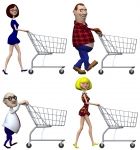
14. product market
|
The market in which households purchase goods and services that firms produce
|
|
|
15. adam smith
|
Man who devolved the idea of capitalism and is considered the “father of the free market. Wrote “The Wealth of Nations
|
|
|
16. underutilization
|
Using fewer resources than an economy is capable of using
|
|
|
17. Gross Domestic product (GDP)
|
The total value of all final goods and services produced in a particular economy; the dollar value of all final goods and services produced within a country’s borders in a given year
|
|
|
18. business cycle
|
A period of macroeconomic expansion followed by a period of contraction
|
|
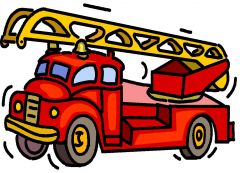
19. public good
|
A shared good or services for which it would be impractical to make consumers pay individually and o exclude non-payers
|
|
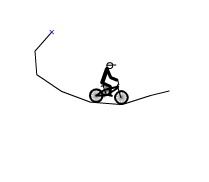
20. free rider
|
Someone who would not choose to pay for a certain good or device but who receives the benefits of it anyway if it were provided as a public good
|
|
|
21. market failure
|
A situation in which the market does not distribute resources efficiently
|
|
|
22. externality (pos/neg)
|
An economic side effect of a good or service that generates benefits or costs to someone other than the person deciding how much to produce or consume
|
|
|
23. in-kind-benefits
|
Goods and services provided for free or at greatly reduced prices
|
|
|
24. law of demand
|
Economic law that states that when its demans decreases and less when its price increases
|
|
|
25. inelastic demand
|
not done
|
|
|
26. inferior good
|
A good that consumers demand less of when their income increases
|
|
|
27. normal good
|
A good that consumers demand more of when their income increases
|
|
|
28. complements
|
Two goods that are brought and used together
|
|
|
29. law of supply
|
Tendency of suppliers to offer more of a good at a higher price
|
|
|
30. inelasic supply
|
A firm that cannot change its output level easily
|
|
|
31. quota
|
A set limit of output
|
|
|
32. Tariff
|
A tax on imported goods
|
|
|
33. subsidy
|
A government payment that supports a business or a market
|
|
|
34.fixed cost
|
A cost that does not change no matter how much is produced
|
|
|
35.variabe cost
|
A cost that increases or decreases depending on the amount made
|
|
|
36. total cost
|
Fixed plus variable cost
|
|
|
37. total revenue
|
not done
|
|
|
38. marginal product of labor
|
The change in output from hiring one additional unit of labor
|
|
|
39.marinal revenue
|
The additional income from selling one more unit of a good; sometimes equal to price
|
|
|
40. excise tax
|
A tax on the production or sale of a good
|
|
|
41. marginal product of labor
|
The change in output from hiring one additional unit of labor
|
|
|
42. regulation
|
Government intervention in a market that affects the production of a good
|
|
|
43. incresing marginal returns
|
A level of production in which the marginal product of labor increases as the number of workers decrease
|
|
|
44. decresing marginal returns
|
A level of production in which the marginal product of labor decreases as the number of workers increase
|
|
|
45. equlibrium
|
The point at which quantity demanded and quantity supplied are equal
|
|
|
46. proce ceiling
|
A maximum price that can be legally charged for a good or service
|
|
|
47. price floor
|
A minimum price for a good or service
|
|
|
48. surplus
|
Situation in which quantity supplied is greater than the quantity demanded
|
|
|
49. shortage
|
A situation in which a good or service is unavailable or when quantity supplied is less than the quantity demanded
|
|
|
50. supply shock
|
A sudden shortage of a good
|
|
|
51. spillover costs
|
Cost of production that affects people who have no
control over the amount of a good |
|
|
52. black market
|
Market in which goods are sold illegally
|
|
|
53. perfect competition
|
Large number of firms where all sell the same good
|
|
|
54. barrier to entry
|
Any factor that makes it difficult to enter a market
|
|
|
55. commodity
|
Product that is the same in all places, such as petroleum, or notebook paper
|
|
|
56. monopoly
|
Market dominated by a single seller
|
|
|
57. economies of scale
|
Factors that cause cost per unit to fall as output rises
|
|
|
58. natural monoply
|
A market that runs most efficiently when one large firm supplies output
|
|
|
59. monopolistic competition
|
Market structure in which many companies sell products that are similar but not identical
|
|
|
60. oligopoly
|
Market structure in which a few large firms dominate the market
|
|
|
61. sole proprietorship
|
A business owned and managed by a single individual.
|
|
|
62. partnership
|
A business organization owned by two
Or more persons who agree on a specific Division of responsibilities and profits. |
|
|
63. corporation
|
A legal entity owned by individual
Stockholders. |
|
|
64. publicly-held corporation
|
Corporation that sells stock on the
Open market |
|
|
65. asset
|
Money and other valuables belonging
To an individual or business. |
|
|
66. liability
|
The legally bound obligation to
Pay debts. |
|
|
67. horizontal merger
|
The combination of two or more firms
Competing in the same market with the same good or service |
|
|
68. verticle merger
|
The combination of two or more firm.Involved in different stages of producing
The same good or service. |
|
|
69. cooperative
|
A business organization owned
And operated by a group of individuals For their mutual benefit. |
|
|
70. conglomerate
|
Business combination merging more
Than three businesses that make the Unrelated products. |
|
|
71. multinational
|
A large corporation that produces and
Sells its goods and services throughout The world. |
|
|
72. labor union
|
An organization of workers that tries
To improve working conditions, wages, And benefits for its members. |
|
|
73. collective bargaining
|
The process in which union and
Company representatives meet to Negotiate a new labor contract |
|
|
74. stock
|
A certificate of ownership in a
Corporation. |
|
|
75. bond
|
A formal contract to reply borrowed
Money with interest at fixed intervals. |
|
|
76. mutual fund
|
Fund that pools the savings of many
Individuals and invests this money in a Variety of stocks, bonds, and other financial Assets. |
|
|
77. diversifcation
|
Spreading out investments to reduce risk.
|
|
|
78. blue chip stock
|
A "blue chip" is the nickname for a stock that
is thought to be safe, in excellent financial shape and firmly entrenched as a leader in its field. Blue chips generally pay dividends and are favorably regarded by investors. |
|
|
79. recession
|
A prolonged economic contraction.
|
|
|
80. depression
|
A recession that is especially long and
Severe. |
|
|
81. depreciation/ appreciation
|
(Deprecation) The loss of the value of
Capital equipment that results from Normal wear and tear or, a decrease in The value of a currency. (Appreciation) An increase in the value of a currency. |
|
|
82. frinctional unemployment
|
Unemployment that occurs when people
Take time to find a job. |
|
|
83. structural unemployment
|
Unemployment that occurs when workers’
Skills of not match the jobs that are Available |
|
|
84. cyclical unemployment
|
Unemployment that rises during economic
Downturns and falls when the economy Improves |
|
|
85. seasonal unemployment
|
Unemployment that occurs as a result of
Harvest schedules or vacations, or when Industries slow or shut down for a season. |
|
|
86. underemployment
|
Working at a job for which one is overqualified,
Or working part-time when full-time work is Desired. |
|
|
87. workfare
|
A program requiring work and purposeful activity;
System of values that gives central importance to work |
|
|
88. entitlement
|
Social welfare program that people are “entitled”
To if they meet certain eligibility Requirements. |
|
|
89. expenditure
|
The act of a country spending money
|
|
|
90. supply-side economics
|
a school of economics that believes tax
Cuts can help an economy by raising Supply. |
|
|
91. monetary policy
|
The actions the Federal Reserve takes to
Influence the level of GDP and the rate Of inflation in the economy. |
|
|
92. interest rate
|
A rate which is charged or paid
for the use of money. |
|
|
93. import
|
A good that is brought in from another
Country for sale. |
|
|
94. export
|
A good that is sent to another country
For sale |
|
|
95. European Union
|
A regional trade organization made up
Of European nations. |
|
|
96. trade surplus
|
The result of a nations exporting more
Than it imports. |
|
|
97. trade deficit
|
The result of a country’s importing
More than it exports. |
|
|
98. absolute advantage
|
The ability to produce more of a given
Product using a given amount of Resources. |
|
|
99. comparative advantage
|
The ability to produce a product most
Efficiently given all the other products That could be produced. |
|
|
100. balance of trade
|
The relationship between a nations’
Imports and exports. |

